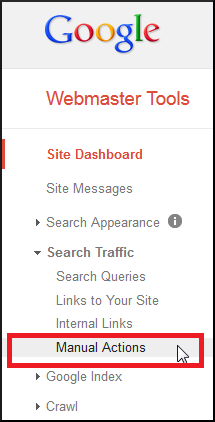Search engines continuously change their ranking criteria and it is the responsibility of leading SEO companies India to keep track of these. Though these engines always try to offer best possible results for viewers, rankings may fall due to search parameters. In case websites fail to adhere by these parameters they are likely to be penalized. These penalties could either be manual or algorithmic. A novel Webmaster Tool feature introduced by Google help in identifying manual actions that directly impact your website’s ranking.
Common Misconceptions
With multiple websites under any search it is normal to feel that a search engine would be having a trying time in checking parameters manually. Here you need to understand that manual verification is only carried out when a search robot detects dangerous signals while going through your web page. Once detected, these pages get marked and invite human intervention. Though this may sound alarming, cases of manual penalization have been recorded to be of less than two percent. Further manual penalization is not severe until and unless you are at fault of generating spams.
 Checking for Manual Penalization
Checking for Manual Penalization
Checking your website for manual penalization could be done in two ways, viz, i) message sent by search engine in webmaster tool, and ii) live checking. Both these processes are well defined and could be executed conveniently by premier SEO companies India. Access of this online tool is through the tools dashboard and subsequently by clicking ‘search traffic>> manual actions’.
In the event that there is actually any manual action, the following phrases would appear:
– Manual actions
– Site-wide matches: none
– Partial matches (with two sub columns of ‘reason’ and ‘affects’)
Manual Action Types
Usually two types of manual actions taken: partial, and site wide. Under partial action, a specific area of a web page is identified that usually generates enough spam, for instance ‘forum page’. Once these areas are detected combating the problem becomes easy. Site wide actions are more elaborate and tougher to handle as they concern an entire site.
Types of Spam
Spam as identified by a search engine could be of four types: thin content, keyword stuffing, unnatural links, and user-generated spam.
Thin Content – Search engine optimizers must always ensure that there is sufficient content in a website. A search engine from time to time changes the number parameter of a content to check for authenticity. It is crucial for an optimizer to check for this number of characters of a content.
Keyword Stuffing – Many writers have a misconstrued idea, that more a keyword or key phrase is repeated. The higher is its possibility of getting a higher rank. On the contrary, too much use of keyword leads to ‘stuffing’, a classification of spamming. Keywords thus are needed to be used judiciously and must never appear deliberate.
Unnatural Links – Link insertion is an inherent optimization procedure of any online page. Care must however be taken that these links have relevance and connected to the contents and keywords. Insertion of wrong links could lead to spamming.
User-Generated Spam – With visitors to your website numbering thousands or even millions the chances of user-generated spam is extremely high. Efficient SEO companies India should be capable of identifying such spam usually coming in ways of comments.
P.S:
If you like to know more about our search engine optimization services, kindly visit our website – www.indian-seo-company.com .
If you want to avail our SEO Services, kindly call us at – +91-33-40200838 or email us at – info@indian-seo-company.com





















